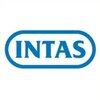
i
Cipla
Proud winner of ABECA 2024 - AmbitionBox Employee Choice Awards
Filter interviews by
Cipla Senior Executive - EHS Interview Questions and Answers
Cipla Senior Executive - EHS Interview Experiences
1 interview found
I applied via Approached by Company and was interviewed in Sep 2021. There were 2 interview rounds.

(3 Questions)
- Q1. Env related questions
- Q2. Documents process in env and forms
- Ans.
Documents process in env and forms
Develop and implement a document control system
Ensure all forms are up-to-date and accessible
Train employees on proper document handling procedures
Regularly review and update processes and forms
Maintain compliance with relevant regulations and standards
- Q3. Operation of plants documents required.
Interview Preparation Tips
1. Technical
2. HOD technical
3. HR for CTC discussion
Top trending discussions






Interview questions from similar companies

Senior Executive - EHS Interview Questions & Answers
Akums Drugs & Pharmaceuticals Limitedposted on 24 Dec 2024
I applied via Naukri.com and was interviewed before Dec 2023. There were 3 interview rounds.
(1 Question)
- Q1. Work profile, previous job roles and skill set
Psychometric test for leadership ability and behaviour test
(1 Question)
- Q1. Interaction with department head on future vision
Interview Preparation Tips

Executive Quality Assurance Interview Questions & Answers
Zydus Lifesciencesposted on 12 Sep 2024
I applied via Walk-in
(2 Questions)
- Q1. All IPQA activities with cGMP Norms
- Ans.
IPQA activities refer to In-Process Quality Assurance activities that ensure compliance with cGMP norms.
IPQA activities involve monitoring and inspecting the manufacturing process to ensure quality standards are met
Examples of IPQA activities include in-process checks, sampling, and documentation review
IPQA activities are essential for maintaining product quality and compliance with cGMP norms
- Q2. Data integrity,and QMS.
Reasoning ,English,maths,gk.
(1 Question)
- Q1. Stability ,salary
Interview Preparation Tips
- IPQA
- QMS

I applied via Job Fair and was interviewed in May 2024. There was 1 interview round.
(7 Questions)
- Q1. What is chemistry
- Ans.
Chemistry is the study of matter, its properties, composition, and interactions.
Chemistry involves understanding the structure and behavior of atoms and molecules.
It explores how substances react with each other and the energy changes that occur during these reactions.
Chemistry is essential in fields such as pharmaceuticals, materials science, and environmental science.
Examples include studying the properties of elemen...
- Q2. Sublimation means
- Q3. What is analytical Chemistry
- Ans.
Analytical chemistry is the branch of chemistry that deals with the analysis of substances to determine their composition and properties.
It involves techniques such as spectroscopy, chromatography, and mass spectrometry.
Analytical chemistry is used in various industries such as pharmaceuticals, environmental monitoring, and food testing.
It plays a crucial role in quality control, research, and development processes.
Ana...
- Q4. Molality defination
- Q5. Gas chromatography principle
- Ans.
Gas chromatography is a technique used to separate and analyze compounds in a gas mixture based on their interaction with a stationary phase.
Gas chromatography involves a sample being vaporized and injected into a column with a stationary phase.
Compounds in the sample interact differently with the stationary phase, causing them to separate based on their properties.
The separated compounds are detected as they exit the ...
- Q6. What is physical properties of analytical Chemistry
- Ans.
Physical properties in analytical chemistry refer to characteristics of substances that can be observed or measured without changing their composition.
Physical properties include color, odor, density, melting point, boiling point, solubility, and conductivity.
These properties help in identifying and characterizing substances in analytical chemistry.
For example, the melting point of a compound can be used to confirm its...
- Q7. What is meant by titration
- Ans.
Titration is a technique used in chemistry to determine the concentration of a substance in a solution.
Titration involves slowly adding a solution of known concentration to a solution of unknown concentration until the reaction reaches its endpoint.
The endpoint is usually indicated by a color change or other observable change.
Titration is commonly used in analytical chemistry to determine the concentration of acids, ba...
Interview Preparation Tips
- NMR ,ESR

Executive Production Interview Questions & Answers
Intas Pharmaceuticalsposted on 17 Apr 2023
I applied via Walk-in and was interviewed in Mar 2023. There were 2 interview rounds.

(3 Questions)
- Q1. What is the density, vaccum, how to create vaccum 760 mmhg in reactor
- Ans.
To create a vacuum of 760 mmHg in a reactor, the density of the substance inside must be reduced.
Reduce the density of the substance inside the reactor by removing any gases or liquids that may be present.
Use a vacuum pump to remove any remaining gases or liquids and create a vacuum.
Ensure that the reactor is properly sealed to maintain the vacuum.
Monitor the pressure inside the reactor to ensure that it remains at 760...
- Q2. What is the conetnt of BPCR.SOP, what is HAZOP, what is the crytallization.distillation and evaporation,
- Ans.
BPCR.SOP is a standard operating procedure for batch production, HAZOP is a hazard and operability study, and crystallization, distillation, and evaporation are separation processes.
BPCR.SOP outlines the steps and procedures for batch production in a consistent and efficient manner.
HAZOP is a systematic approach to identifying potential hazards and operability issues in a process.
Crystallization is a process of separat...
- Q3. Thyeorticle yield, PHA,PSI, HIRA,
Interview Preparation Tips

I was interviewed before Jan 2024.
(6 Questions)
- Q1. What's your experience and current job role?
- Q2. What is your expectation on CTC?
- Q3. Why do you want to change your current job?
- Q4. What do you know about our organization?
- Q5. When will you willing to join as early as possible?
- Q6. Have you any questions to ask?
(2 Questions)
- Q1. Questions on current job and past experience with examples!!
- Q2. Have you wants to know about upcoming job description? Or any questions?
Interview Preparation Tips

Executive Production Interview Questions & Answers
Sun Pharmaceutical Industriesposted on 1 Jul 2023

75 questions related to pharmaceutical education and 25 English and reasoning
(2 Questions)
- Q1. HVAC, FBD, Education Background
- Q2. Relative Humidity BCS Classification PH Range WFI limits Injectable Finished Product Analysis


(11 Questions)
- Q1. 1. What is the fullform of MLSS
- Ans.
MLSS stands for Mixed Liquor Suspended Solids.
MLSS refers to the concentration of suspended solids in a mixed liquor sample.
It is an important parameter in wastewater treatment processes.
MLSS is measured in milligrams per liter (mg/L) or parts per million (ppm).
It indicates the biological activity and treatment efficiency of the system.
Maintaining optimal MLSS levels is crucial for effective wastewater treatment.
- Q2. 2. What types of biohazards you have andhow to dispose?
- Q3. 3. Flow diagram of ETP
- Ans.
A flow diagram of an ETP shows the process of treating wastewater before it is discharged into the environment.
The flow diagram typically includes the different stages of treatment, such as screening, sedimentation, and disinfection.
It may also show the equipment used in each stage, such as pumps, filters, and chemical dosing systems.
The diagram should indicate the flow of water through the system, including any recirc...
- Q4. 4. What measure actions taken to minimize the hazarfous waste
- Ans.
To minimize hazardous waste, we implement measures such as waste reduction, recycling, and proper disposal.
We conduct waste audits to identify areas where waste can be reduced.
We implement a waste reduction program that includes reducing the use of hazardous materials.
We recycle materials such as paper, plastic, and metal.
We properly dispose of hazardous waste by following regulations and using licensed disposal facili...
- Q5. 5. How to dispose of powder wastes?
- Ans.
Powder wastes should be disposed of properly to avoid environmental hazards.
Segregate the powder waste according to its type and toxicity level.
Dispose of non-hazardous powder waste in regular trash bins.
Hazardous powder waste should be collected in sealed containers and labeled properly.
Contact a licensed waste disposal company to properly dispose of hazardous powder waste.
Follow local and federal regulations for powd...
- Q6. 6. Explain the types of fire and fire extinguishers?
- Ans.
There are four types of fire: Class A, Class B, Class C, and Class D. Each type requires a specific type of fire extinguisher.
Class A fires involve ordinary combustibles such as wood, paper, or cloth. Water or foam extinguishers are suitable for this type of fire.
Class B fires involve flammable liquids such as gasoline or oil. Carbon dioxide or dry chemical extinguishers are suitable for this type of fire.
Class C fires...
- Q7. 7. What isthe function of Jockey pump
- Ans.
Jockey pump is a small pump used to maintain pressure in a fire protection system.
Jockey pump is used in fire protection systems to maintain pressure in the system.
It is a small pump that operates continuously to keep the pressure within a certain range.
It is typically used in conjunction with larger fire pumps that are activated when the pressure drops below a certain level.
Jockey pumps are important for ensuring that...
- Q8. 8. How to calculate the fire water capacity?
- Ans.
Fire water capacity can be calculated based on the fire hazard classification and the size of the facility.
Determine the fire hazard classification of the facility
Calculate the required fire flow rate based on the classification
Determine the duration of the fire event
Multiply the fire flow rate by the duration to get the fire water capacity
Consider any additional factors such as fire department response time and water
- Q9. 9. How to calculate the fire load
- Ans.
Fire load can be calculated by determining the amount of combustible materials in a given area.
Identify all combustible materials in the area
Determine the weight or volume of each material
Calculate the heat release rate of each material
Add up the heat release rates to get the total fire load
Consider the ventilation and layout of the area in the calculation
- Q10. 10. Explain types of work permits which you have followed
- Q11. 11. How to generate condensate water in boiler
- Ans.
Condensate water is generated in a boiler when steam is condensed back into water.
Condensate water is a byproduct of the steam generation process in a boiler
It is generated when steam is cooled and condensed back into water
This water is typically high in purity and can be reused in the boiler or for other purposes
Methods for generating condensate water include using heat exchangers or cooling towers
Interview Preparation Tips

Executive Quality Assurance Interview Questions & Answers
Aurobindo Pharmaposted on 18 Aug 2023

(1 Question)
- Q1. Tell me about your self
(1 Question)
- Q1. What is APQR What is validation
- Ans.
APQR stands for Annual Product Quality Review. Validation is the process of establishing documented evidence that provides a high degree of assurance that a specific process will consistently produce a product meeting its predetermined specifications and quality attributes.
APQR is a review conducted annually to evaluate the quality standards of a product throughout its lifecycle.
Validation involves documenting evidence...
(1 Question)
- Q1. What is your current CTC
Interview Preparation Tips

Executive Quality Assurance Interview Questions & Answers
Alkem Laboratoriesposted on 17 Jan 2025
I applied via Approached by Company and was interviewed before Jan 2024. There were 2 interview rounds.
1st round of test and 2nd is technical round
(2 Questions)
- Q1. Genral technical questions
- Q2. As per your Cv and technical work
Cipla Interview FAQs
Tell us how to improve this page.
Cipla Interviews By Designations
- Cipla Senior Executive Interview Questions
- Cipla Assistant Manager Interview Questions
- Cipla Therapy Manager Interview Questions
- Cipla Medical Representative Interview Questions
- Cipla Pharmacist Interview Questions
- Cipla Trainee Interview Questions
- Cipla Deputy Manager Interview Questions
- Cipla Executive Interview Questions
- Show more
Interview Questions for Popular Designations
Interview Questions from Similar Companies
Fast track your campus placements
Cipla Senior Executive - EHS Reviews and Ratings
based on 4 reviews
Rating in categories
|
Senior Executive
3.7k
salaries
| ₹1.8 L/yr - ₹8.5 L/yr |
|
Assistant Manager
2.7k
salaries
| ₹3.8 L/yr - ₹13.8 L/yr |
|
Deputy Manager
1.1k
salaries
| ₹5.3 L/yr - ₹18.3 L/yr |
|
Executive
986
salaries
| ₹1.7 L/yr - ₹6 L/yr |
|
Area Business Manager
603
salaries
| ₹4.3 L/yr - ₹12 L/yr |

Sun Pharmaceutical Industries

DRJ & CO

Lupin

Biocon Limited
- Home >
- Interviews >
- Cipla Interview Questions >
- Cipla Senior Executive - EHS Interview Questions










